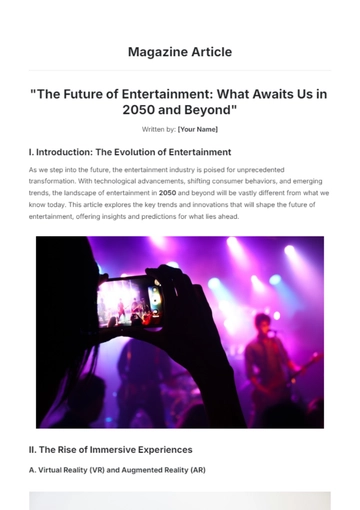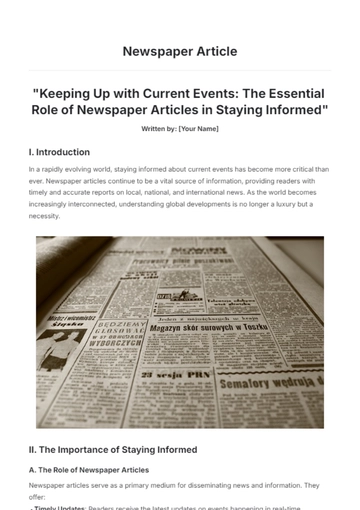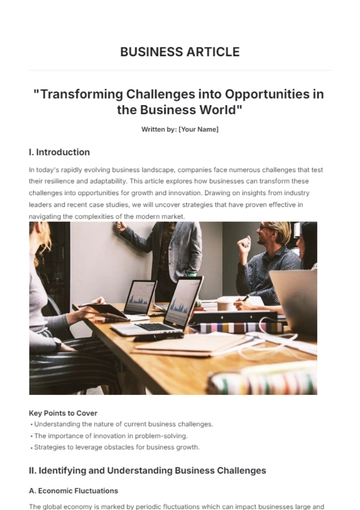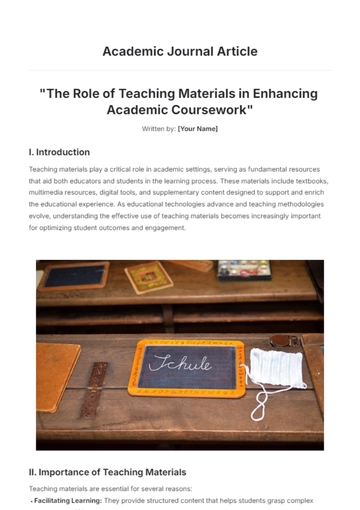Free Traditional Article
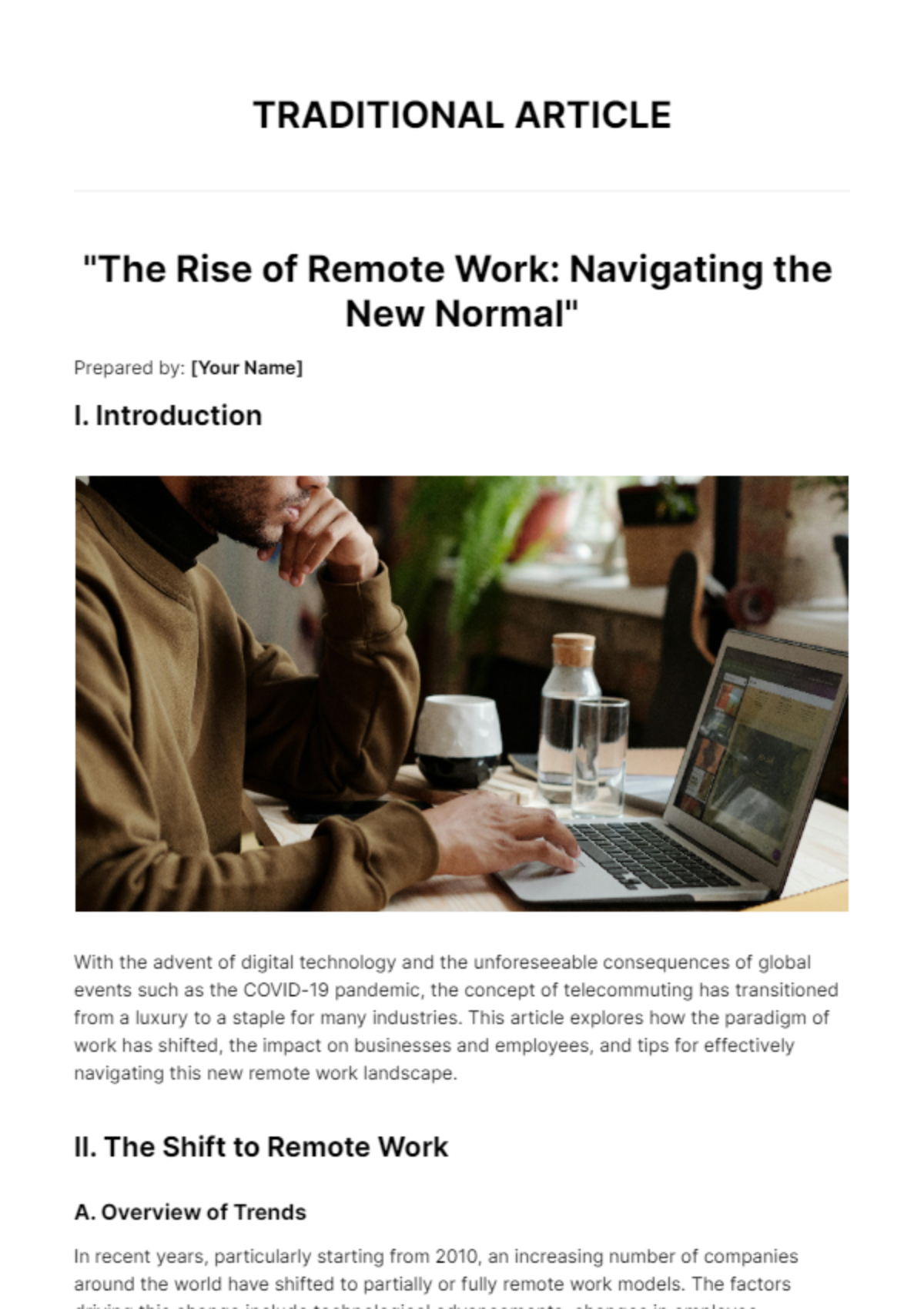
"The Rise of Remote Work: Navigating the New Normal"
Prepared by: [Your Name]
I. Introduction

With the advent of digital technology and the unforeseeable consequences of global events such as the COVID-19 pandemic, the concept of telecommuting has transitioned from a luxury to a staple for many industries. This article explores how the paradigm of work has shifted, the impact on businesses and employees, and tips for effectively navigating this new remote work landscape.
II. The Shift to Remote Work
A. Overview of Trends
In recent years, particularly starting from 2010, an increasing number of companies around the world have shifted to partially or fully remote work models. The factors driving this change include technological advancements, changes in employee preferences, and economic pressures.
B. Statistical Insights
According to research by Remote Work Institute, the percentage of remote workers has seen a steep increase from just 5% in 2010 to an estimated 42% in 2023. This shift is illustrated in the following chart:
C. Case Studies
Several global companies, including Tech Innovate Inc. and Remote Solutions Co., serve as benchmarks in the transition to remote work. These organizations have reported improvements in productivity and employee satisfaction, which are detailed in their annual reports from 2018 to 2022.
III. Best Practices for Remote Work

A. Establishing Effective Communication
Effective communication is crucial when managing remote teams. Tools like Slack and Microsoft Teams are essential for maintaining clear and constant communication. Additionally, regular virtual meetups and scheduled one-on-one sessions can help in aligning team goals and addressing any issues promptly.
B. Tools and Technologies
Utilizing the right tools can significantly enhance productivity and ease the management of remote teams. Consider implementing software solutions such as:
Trello: For tracking tasks and projects
Google Workspace: For collaborating on documents and projects in real-time
Toggl: For managing time efficiently and ensuring work-life balance
C. Creating a Conducive Work Environment
Remote work requires a suitable home environment that promotes productivity. Key elements include a dedicated workspace, adequate lighting, and ergonomic furniture. Employees should also be encouraged to personalize their space to foster a pleasant work atmosphere.
IV. Conclusion
The transition to remote work, while challenging, presents numerous opportunities for companies willing to adapt. By embracing change, investing in the right tools, and fostering strong communication, businesses can thrive in this new normal. As we continue to navigate through these changes, the flexibility and resilience demonstrated will shape the future of work.
V. About the Author
[Your Name] is a renowned writer and analyst in the field of workplace innovation and productivity. With over 10 years of experience, [He/She/They] provide insights that help organizations adapt to the evolving business landscape.
- 100% Customizable, free editor
- Access 1 Million+ Templates, photo’s & graphics
- Download or share as a template
- Click and replace photos, graphics, text, backgrounds
- Resize, crop, AI write & more
- Access advanced editor
Introducing the ultimate solution for crafting professional-grade articles effortlessly - the Traditional Article Template from Template.net. Our editable and customizable template, easily tailored to your needs, guarantees seamless creation. Editable in our AI Editor Tool, it ensures efficiency and precision, empowering you to produce captivating content with ease.









